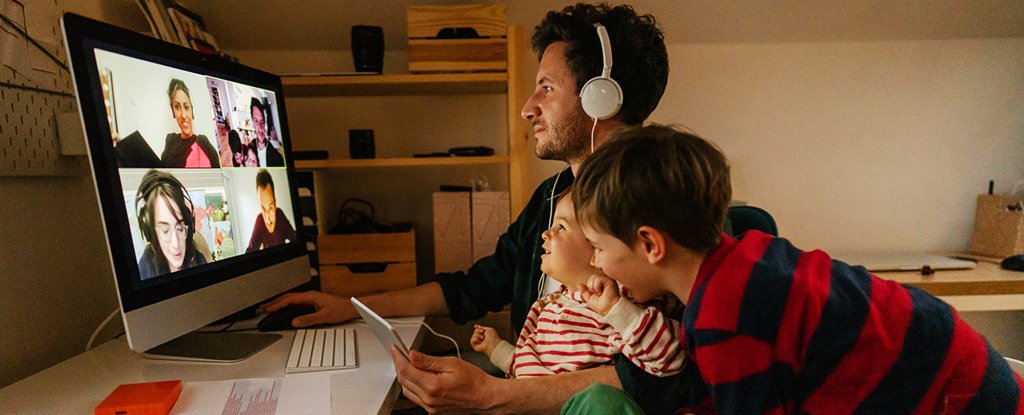You would think after more than two years of adjusting to the virtual hiring necessities of a Covid world that making remote hiring decisions would be easy as pie. But the truth is that getting a good read on candidates and making job placements based solely on digital interactions is a challenge. Virtual hiring requires a new skill set in order to ensure that digital placements result in quality, long-term additions to your company’s team. Often, these decisions come down to the information and impression you can gather during the remote interview process. To make the best use of your time and energy, it’s important for employers to plan ahead and strategize for virtual interviewing.
That’s not to say that virtual interviewing is all challenge and trouble. There are also a lot of benefits to conducting virtual interviews like speed, accessibility, and comfort. Understanding these benefits can help hiring managers make the best use of this modern recruiting tool. Let’s start today’s exploration of virtual hiring with the good stuff and then discuss how hiring teams can overcome some of its challenges.
In the past, virtual interviews were reserved only for initial screenings, temp agencies, and fully remote positions at large companies. But since the start of the pandemic forced companies to rethink how they interact with their potential employees, remote hiring became the norm. And even though many organizations have reopened their offices and are meeting in person on a full or hybrid basis, virtual interviewing has stuck around–and for good reason.
And of course, as Covid continues to evolve, conducting virtual interviews mitigates risk for both employers and candidates. All this makes a compelling case for why virtual interviewing is the go-to for most companies. In fact, a recent Indeed survey found that 82% of employers choose to use virtual interviewing and 93% of those say that they will continue with this trend even beyond the pandemic.

As with any new technology and shift in hiring trends, there are complications that come along with virtual interviewing. Even some of the benefits we listed above can have a dark side that makes remote hiring a difficult–and not always successful–process for employers. Luckily, we have a few suggestions for how you can enhance your team’s virtual interview process to take advantage of all its perks.
By now, most of us have had plenty of practice with video conferencing technologies like Zoom, Skype, and Microsoft Teams. But that doesn’t mean there still isn’t room for trouble to rear its head. From internet issues, difficulty connecting to audio, to candidates being unaware that they needed to set up an account or install an app prior to the interview, technology can certainly get in the way of a good remote hiring experience. In fact, we wrote all about technology barriers and how to set yourself and your interviewees up for success in another recent blog.
But to sum it up, it’s more important than ever to provide your candidates with clear instructions and advice on using the specific video conferencing platform you’ve chosen for the virtual interview process. Just make sure to cross all your t’s and dot all your i’s and things should go smoothly!
There are currently about 5 million more job openings than there are unemployed workers in the US which has put many employers in a bit of a scramble. At first glance, a widened candidate pool that comes along with virtual interviewing sounds like a great solution to this problem, and it can be! But it can also mean your team may receive a slew of applications and interview requests, some of which may be woefully underqualified. We all know that interviewing takes a lot of time from your team members so it’s important to choose wisely when offering virtual interviews to applicants.
To be the most lean virtual-interviewing-machine, you’ll want to implement some pre-screening methods. Platforms like LinkedIn allow you to add screening questions to your job listing that will automatically sort candidates or even eliminate certain applicants if they don’t meet important criteria. You can also send skills tests via email before reaching the interview stage to allow you more specific insight into the candidate’s experience level.
Some employers even use what’s called a one-way interview, where candidates are asked to video record themselves answering a set of initial questions. Hiring managers can then review the videos at their leisure and make a decision about offering that applicant a live virtual interview.
Phone screening is another way you can limit time spent in long video interviews. Not only can 30 minutes on the phone with a candidate help answer those initial questions, it can also inform what subjects you want to dive deeper into during your live virtual interview. Virtual interviewing questions can be tailored to drive efficiency in the virtual interview process.
The ability to take an interview from the comfort of your home can help candidates feel more confident and relaxed throughout the process. But it can also open the door to blurrier lines between home life and work. Interruptions from kids, roommates, pets and more can disrupt the interview from both sides.
Although these distractions aren’t 100% avoidable, start by setting expectations before the interview by requesting that the candidate choose a quiet, private space to take the call and by being clear about the amount of time they will need to set aside for this activity. Of course, you and your hiring team should do the same courtesy in order to set a professional attitude.

You should also be prepared to practice patience as candidates transition from one mindset to another within the same setting. Perhaps they are taking time away from their current job to take this interview or are otherwise full-time caregivers to their kids. Providing 5 minutes of transition time at the beginning of the interview where both parties can get settled and switch into work mode can help remove stress and make the rest of your virtual interviewing time more fruitful.
One of the most difficult aspects of the virtual interview process, and the one our clients struggle with the most, is the reduced ability to read body language cues and connect with candidates on a more personal level. Personality can be an incredibly important factor in deciding whether or not a candidate is going to be a good long-term fit for your team and company culture. Without many of the non-verbal cues that can be gathered during in-person interviews, it can be a struggle to get a proper read on candidates’ temperament. You’ll need to get creative in order to make up for some of this lost connection when conducting virtual interviews.
You might choose to have candidates take a virtual personality test and send their results to your hiring team. If you do so, make sure your hiring manager and other key team members have also taken the test, as they will offer you better insights into how you can work together on the job.

At the beginning of your virtual interview, have each employee on the call introduce themselves, not just by name and role but also with a fun fact or anecdote that will help your candidates begin to build a better picture of your team in their head. Sharing this kind of information also improves memory and will help candidates feel more at ease.
Setting aside time for more casual conversation at the beginning or end of the interview can also help provide a set structure for building rapport. What does the candidate like to do in their free time? What are their weekend plans? Are they a morning person or a night owl? It may seem trivial, but these little clues can help ensure you make placements that are long-lasting.
Your team should also highlight your company’s culture so that the interviewees understand and connect with their potential work environment. Describe what your office is like, any regular team building activities or events you have, share your company values, and even key stories of how the team has worked together in the past.
These skills take time and practice to get right, so it can be helpful to add a layer of transparency to the virtual interview process. Let candidates know you’re working together to find the best ways to evaluate and select the perfect match. And be open to feedback if they have any–they may have been around the block when it comes to virtual interviewing. Keep adapting and discussing as a team to find what works for your company. If you need more specific advice on how to adapt your virtual interview process, have virtual interviewing challenges that aren’t addressed above, or want to bounce some ideas off remote hiring experts, just shoot us an email!